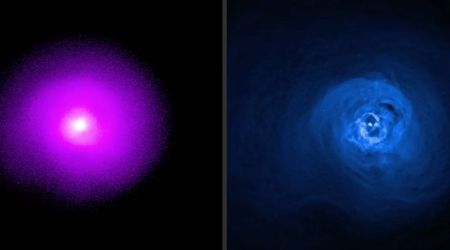M1 Supernova Remnant

Have you ever seen the remains of a star in its old age? If not, take out your scope on a clear night and point it towards the constellation Taurus. Locate the 2nd-magnitude star Zeta Tauri, and from here move your telescope one-degree northwest. M1, the famous Crab Nebula will be right in the center of your eyepiece’s field.
The nebula is all that is left of a supernova that erupted nearly one thousand years ago. Ancient Chinese records indicate that the supernova exploded on July 4, 1054. For several weeks it shone far brighter than Venus and was even visible in daylight. This spectacular event was also recorded by Anasazi Indians, in pictographs on the rock walls of canyons in Navaho and White Mesa (Arizona).
M1 got its strange name on the ground of a drawing made by Lord Rosse in 1844, using a 36-inch reflector. The nebula is a challenging object for small telescopes, and you need a lot of imagination to see something similar to Rosse’s drawing. It appears as an elliptical 8th-magnitude hazy patch at low magnification. Higher magnifications start to show some detail in its shape, with some suggestion of mottled or streak structure in the inner part of the nebula.
It is very important that you observe this object from a location with dark skies. If you are observing from the city, the nebula will be difficult because it is diffuse and its surface brightness is low.









